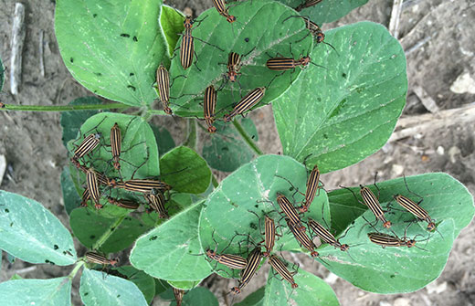Blister Beetles in Vegetable Gardens

While we commonly think of blister beetles as a pest in hay crops, especially for horses, these insects can be a significant pest in vegetable gardens. There are several different species of blister beetles in Kansas, ranging in size from ½ to ¾ of an inch long and in color from black to gray to brown striped. No matter what size or color, blister beetles can be identified by their elongated, narrow, cylindrical bodies, with the middle body being narrower than the head of the wing covers. These beetles can quickly strip vegetables, especially tomatoes, within a couple of days if there are enough of them. These insects tend to congregate in groups on flowers and leaves of plants in the families Amaranthaceae, Asteraceae, Fabaceae, and Solanaceae.
Blister beetles get their common name because they contain a substance called cantharidin, which can cause large, erect, watery blisters. If you have a few blister beetles, you can remove them and drop them in a bucket of soapy water, but wear gloves to prevent injury. If there are large numbers of these insects, chemical control may be your only option. Use products with the active ingredient permethrin, pyrethroids, cyfluthrin, or bifenthrin. Unfortunately, other than removing the beetles and squishing them or putting them in soapy water, there aren’t any effective cultural control methods for them.

Have questions? Contact our office where our Horticulture Extension Agent will assist you with questions.
Phone: (316) 321-9660
Email: callae@ksu.edu